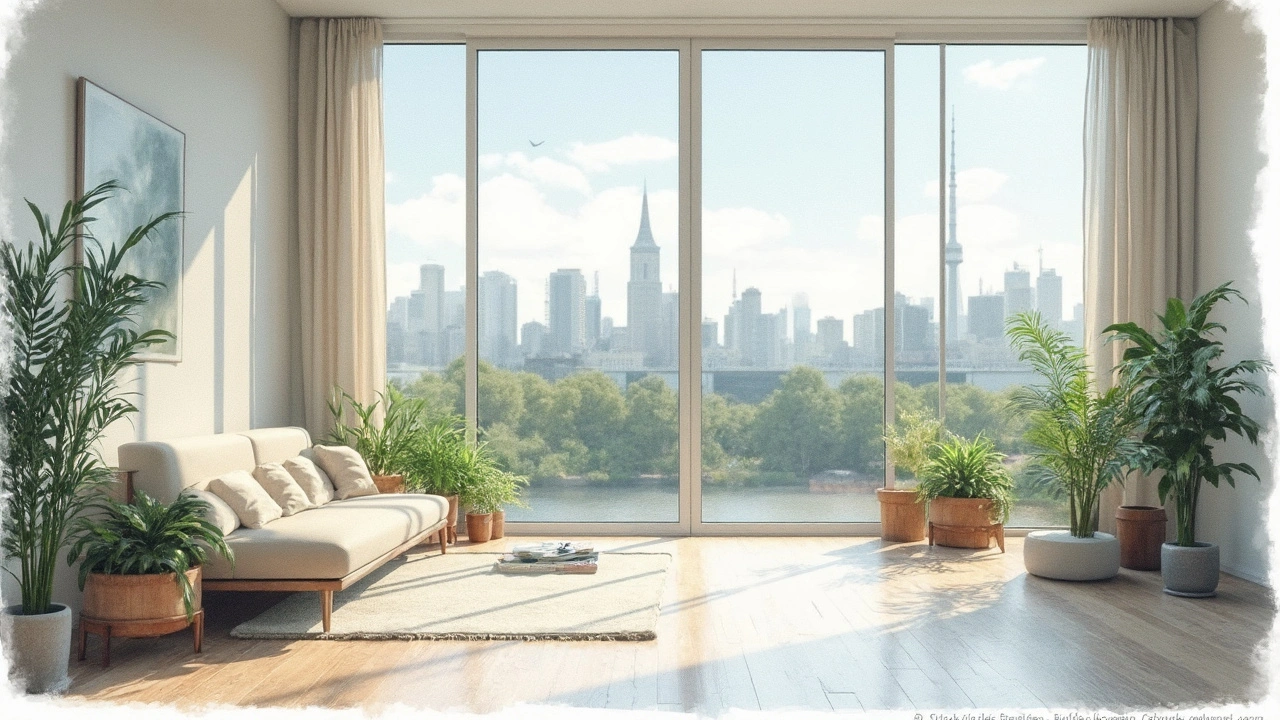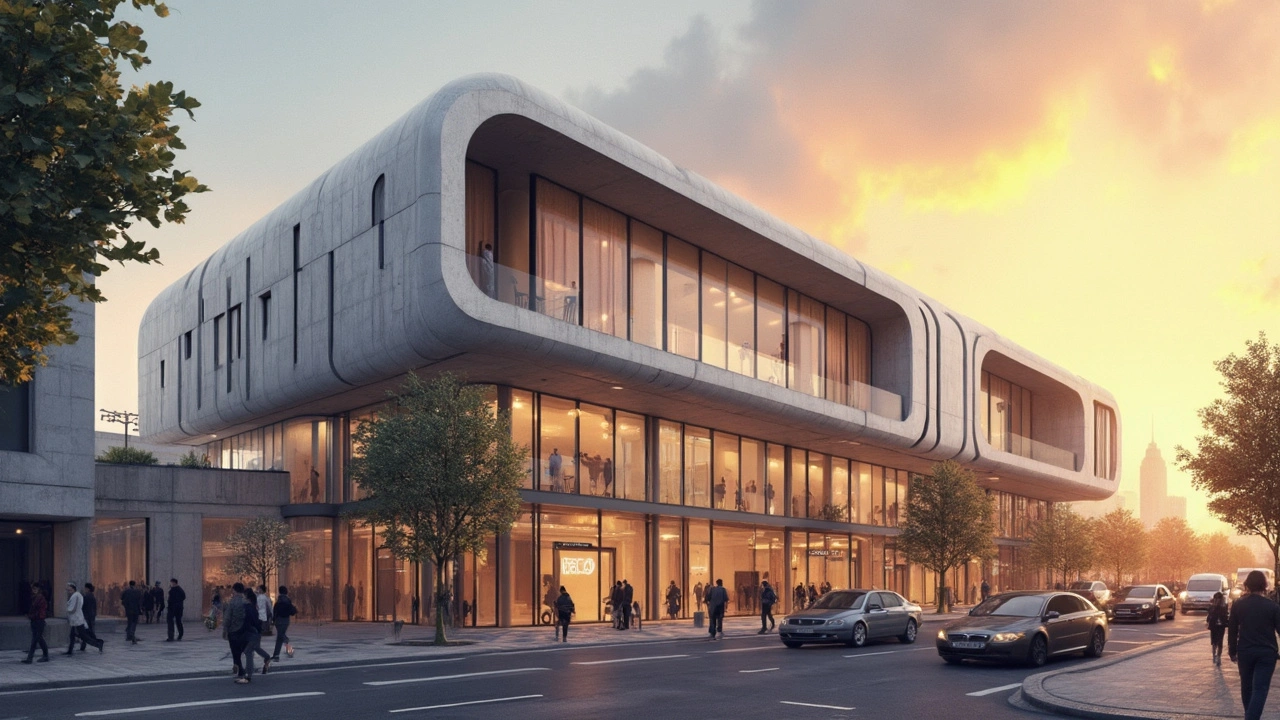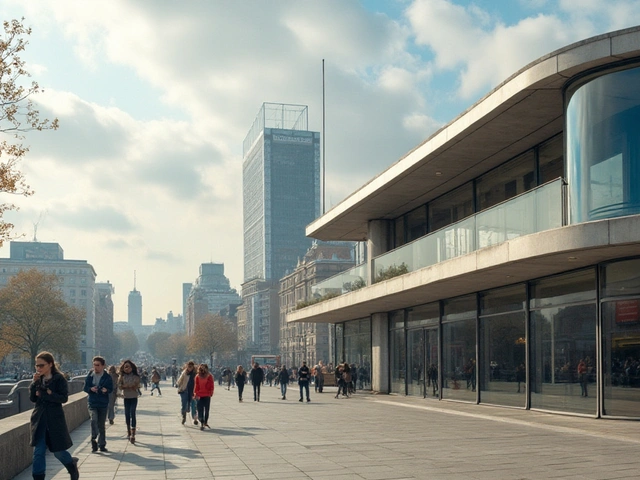Ever wonder why so many buildings today have that sleek, no-fuss look? That's the magic of the International Style at work! This style, born in the 1920s, aimed for simplicity, functionality, and elegance without frills. Think of it as the minimalist's dream, with a global spin!
At its core, the International Style emphasizes straight lines, open spaces, and a lack of ornamentation. It's all about stripping down to the essentials – kind of like decluttering but on an architectural scale. It's interesting, right? This movement said goodbye to the overly decorative and embraced a look that anyone from New York to Tokyo could appreciate.
But how did this style take off? It was a response to changing times—industrial advancements and a desire for newness. Architects like Le Corbusier and Ludwig Mies van der Rohe led the charge, leaving behind iconic structures that still turn heads today.
- A Brief History of International Style
- Key Principles and Characteristics
- Influence on Modern Architecture
- Impact on Interior and Product Design
- Critiques and Limitations
- Practical Tips for Incorporating International Style
A Brief History of International Style
The International Style really hit the scene back in the 1920s and 1930s. This was a time when architects were seriously rethinking how buildings should look and function. It was like a rebellion against the fancy, decorated trends of the past, a fresh start aiming for simplicity.
A big push came from Europe with the famous Bauhaus movement—more than just an art school, it fostered ideas that shaped the Modern Aesthetics we see today. Walter Gropius and Ludwig Mies van der Rohe were some of its champions, promoting the idea that buildings should be functional, accessible, and free of unnecessary fluff.
These ideas were first put to the test during the 1927 Weissenhof Estate exhibition in Stuttgart, Germany, where designers created a colony of homes that embodied the emerging style. Suddenly, architecture didn't have to be all about grand columns and lavish facades. It could be clean and simple, yet still bold and striking.
Things shifted when these ideas crossed the Atlantic, especially influenced by political changes in Europe. Architects like Philip Johnson and Richard Neutra introduced the style to America, helping redefine urban landscapes and suburban homes alike. Suddenly, cities across the globe started to look more similar, sharing a universal appeal with structures that looked like they belonged to the same family.
It's worth noting that by the mid-20th century, more than a third of buildings constructed in major cities were influenced by this minimalist design and functionality focus. That's a pretty big transformation!
So, how did this movement stick around? Its practicality and efficient use of space found a new fan base as cities expanded post-World War II, demanding more housing and office spaces. The simple lines and open interiors of International Style were perfect for this new era, and they're still going strong today.
It's fascinating how a few visionary architects and designers reshaped our physical world. From iconic skyscrapers to modern-day homes, the International Style continues to influence how we build and live.
Key Principles and Characteristics
So, what exactly makes the International Style tick? It boils down to a few crucial ideas that keep popping up in buildings and design everywhere.
Form Follows Function
This is basically the mantra of the style. The idea is that a building should be designed primarily based on its purpose. No unnecessary bits and bobs, just the essentials to get the job done. Makes sense, right?
Simplicity and Clean Lines
One glance at an International Style building, and you'll notice its absence of clutter. It’s all about straight lines and geometric shapes. These designs use the rawness of materials like concrete and steel to create a sort of timeless, clean vibe.
Open Interior Spaces
Imagine walking into a wide, open room without too many walls breaking up the space. That's what this style aims for—creating a feeling of openness and flexibility inside buildings. This was pretty revolutionary because it allowed for better use of space.
Use of Glass and Steel
Glass windows that stretch from floor to ceiling? Thank the International Style. This approach gives buildings a slick, modern look and lets a ton of natural light pour in, which is always a plus. Combined with steel structures, it makes buildings look light and airy.
Lack of Ornamentation
Forget about excessive cornices and decorative facades. This style is all about 'less is more.' It skips the fluff, focusing instead on the purity and elegance of the building itself.
| Principle | Description |
|---|---|
| Form Follows Function | Design driven by purpose and function rather than aesthetics. |
| Simplicity | Emphasizes clean lines and minimalism. |
| Open Spaces | Features large, unobstructed interiors. |
| Glass and Steel | Utilizes modern materials for a sleek look. |
| No Ornamentation | Avoids unnecessary decoration for a straightforward design. |
Put all these elements together, and you get a style that’s both practical and cutting-edge, even by today's standards. It’s no wonder the International Style has left such a huge mark on modern aesthetics.
Influence on Modern Architecture
The International Style has left a monumental mark on modern architecture, shaping buildings and urban landscapes as we know them today. This movement was all about breaking free from traditional constraints and embracing industrial advances. How exactly did this style influence today's architecture? Let's dive into that!
First off, you'll notice the clean, geometric designs that characterize many modern structures. Skyscrapers, in particular, owe much of their aesthetic to the International Style. Rather than overly decorative façades, these tall giants focus on maximizing space and functionality with sleek glass and steel exteriors.
Emphasis on Functionality
Functionality was key with the International Style. Architects wanted buildings that didn't just look good but were also efficient and practical. This approach led to open floor plans, which provide flexibility and adaptability—something quite crucial in urban environments where space is at a premium.
Use of New Materials
Another game-changer was the use of new materials like reinforced concrete and steel. These allowed for more daring and imaginative architectural designs. The glass curtain wall became a signature element, enabling architects to create exterior walls that are essentially all windows, offering expansive city views and natural lighting.
Interestingly, a study from 2023 showed that over 60% of new urban building projects incorporate elements from International Style. This style's principles have even influenced green architecture, emphasizing sustainable practices such as passive solar design and the use of sustainable materials.
Timeless Appeal
What's truly fascinating is how timeless these designs are. Many buildings from the mid-20th century still look striking today, and cities worldwide incorporate these elements into new projects to maintain a cohesive and modern look.
So next time you admire a glass-and-steel structure while wandering your city, remember—you’re looking at the legacy of the International Style. It’s proof that good design, rooted in simplicity and functionality, never goes out of style.

Impact on Interior and Product Design
When it comes to Modern Aesthetics, the influence of International Style is pretty big, even inside our homes and in the products we buy. We've all seen those sharp, clean lines in modern furniture and thought, 'Wow, that's sleek!' That's the International Style speaking, my friend.
Let's break it down. Inside a home, less really becomes more. You get open floor plans, which means no unnecessary walls cluttering up your space. Everything is purposeful, from the furniture to the decor. It gives a vibe of orderliness and calm—something we all could use a bit more of.
Furniture Design
Take a look at furniture. Pieces like the Barcelona chair by Mies van der Rohe are icons of this style. They're functional, with no extra frills that just get in the way. The materials used, like steel and leather, were chosen for durability and simplicity.
International Style encouraged designers to use new materials and mass production methods. This made stylish furniture more accessible to everyday folks, not just the wealthy.
Product Design
The impact doesn't stop at furniture. Even our gadgets and appliances reflect this style. Ever noticed how sleek your phone or laptop looks? It's all part of this shift towards simplicity and functionality.
The rise of modular design in products—think adjustable shelves or customizable gadgets—is another nod to the International Style. Designers began to focus on universal appeal, which is why many products have that clean, straightforward aesthetic
Incorporating these principles into your own home can be easier than you'd think. Look for pieces that balance aesthetics with utility, and don't be afraid to mix new and old. Embrace the mantra of 'less is more,' and you'll get that modern, stylish vibe right at home.
| Style Element | Characteristic |
|---|---|
| Furniture | Sleek, minimal, functional |
| Materials | Steel, glass, leather |
| Spaces | Open floor plans, less clutter |
Critiques and Limitations
The International Style might look all sleek and modern, but it's not without its critics. One of the biggest knocks against it is the very thing that makes it so recognizable: its uniformity. Ever notice how some modern buildings seem like they could be anywhere in the world? That’s part of the package when you embrace a universal design ethos, but it can make places feel a bit, well, soulless.
In towns relying on unique architectural history, this can be a real downer. Imagine sticking a glass-and-steel box in the middle of Tuscany's historic landscape. It's not quite the right fit, is it?
Environmental Concerns
Then there’s the environmental angle. Many of these designs, with their large glass facades, aren't the best when it comes to energy efficiency. All that glass can lead to some pretty hefty air conditioning bills in hot climates (hello, greenhouse effect!). It's a bit of a head-scratcher when we're all trying to go green.
Lack of Personal Touch
From a personal standpoint, the International Style might sometimes feel a bit too impersonal. With its focus on flat surfaces and monochromes, it can lack warmth and character, which isn't everyone's cup of tea. Homeowners looking for a cozy, inviting vibe might find it too stark and sterile.
Cultural Disconnect
Another point to ponder: the style often overlooks regional and cultural context. It was meant to be global, sure, but in ignoring local traditions and climates, some argue it loses the essence of what makes architecture connect with people on a deeper level.
While the International Style helped shape the world of modern aesthetics, it's clear that it’s not a one-size-fits-all solution. It’s all about balance—and where to sprinkle a little of that international charm without losing sight of what makes a place, truly, a place.
Practical Tips for Incorporating International Style
So you're hooked on the International Style and want to bring that sleek, modern vibe into your space? Awesome choice! This style isn’t just for architects, anyone can incorporate its elements into their home or office.
Think Minimal
The key to the International Style is keeping it simple. Toss out what's not essential and focus on clean lines and functional pieces. Think furniture that boasts utility with a no-frills design. If you've got ornate decorations, consider swapping them out for something more streamlined.
Open Up Space
Walls can be barriers in more ways than one! If you're thinking of renovating, consider open plans that allow for free movement and natural light to flow. The goal is to create spaces that communicate simplicity without feeling cramped.
Consider Material Choice
The International Style used materials that were both democratic and modern for its time. Steel, glass, and concrete are classics, reflecting an air of simplicity and efficiency. Think about incorporating these into your furnishings or finishes.
Go for Neutral Colors
The color palette plays a huge role. Stick to neutral colors or monochromatic schemes to harmonize with the architectural elements. Whites, greys, and blacks, with the occasional splash of color, keep the look cohesive and calming.
Invest in Iconic Furniture
If you’re serious about aesthetics, investing in furniture pieces that reflect the International Style is key. Iconic chairs by designers like Mies van der Rohe can become conversation starters while maintaining the style's ethos.
Embrace Functionality
Lastly, remember that form follows function. Whatever piece or element you introduce, ask yourself: Does it serve a purpose? The beauty of this style is that it doesn’t just look good, it works well, too!
By applying these tips, you're not just bringing in a style; you're inviting a philosophy that values simplicity and universal appeal. It's all about making life easier while being aesthetically pleasing, a perfect combo!





